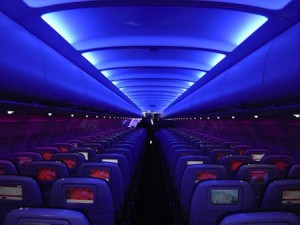In an article from Trendwatching.com entitled, “Flawsome: Why brands that behave more humanly, including showing their flaws, will be awesome”, the writer focused on ideas as to why brands who are more personal are becoming more appealing to and gaining more loyal clients. Brands that possess traits such as being honest or transparent, being open to communication, being caring and most importantly being apologetic when mistakes are made, are able to make genuine connections with their clients. This ties to the fact that with numerous amounts of brands present within every industry and every spending bracket, there is a need for companies to find a way to develop loyalty.

Taken from Trendwatching.com from article "Flawsome"
This article simply made me aware of what I already have been doing, which is advocating the brands that have people who actually provide support and reach out to render better services or products to me. So it made me think of this example, for instance you are looking for a potential replacement for a position within your company, and you set minimum requirements for the “hard skills” that are needed and make sure that everyone who applies meets all these requirements before they move on to the interview with you. That being said, how else would you then differentiate/select the “one” candidate from the others? I would look for the candidate that possesses attributes that match/benefit me or my company, and I’m guessing you would do the same. Keeping that in mind, then in choosing brands, it would make most sense or be natural for us to choose brands that we find common ground with. Don’t get me wrong quality and design play integral roles in our decision making, but with the myriad of products available, in our eyes the playing field for these brands are relatively equal.

Taken from The Drum Modern Marketing & Media UK
Just like the article stated, as consumers, we’re not looking for the perfect brand, because we know that does not exist and we often have negative reactions to people/brands that look at themselves as perfect. We’re simply looking for the brand that knows how to be a “friend”, knows how to reciprocate, communicate and most importantly knows how to generate added value. The bottom-line is, company or brand values and their alignment with consumer values are very significant. In this day and age, most brands already meet the “standards” that we [consumers] have set for their products and we expect nothing less, it’s the subtleties and intricacies involved in being able to develop genuine “relationships” with clients that actually make certain brands stand out.



